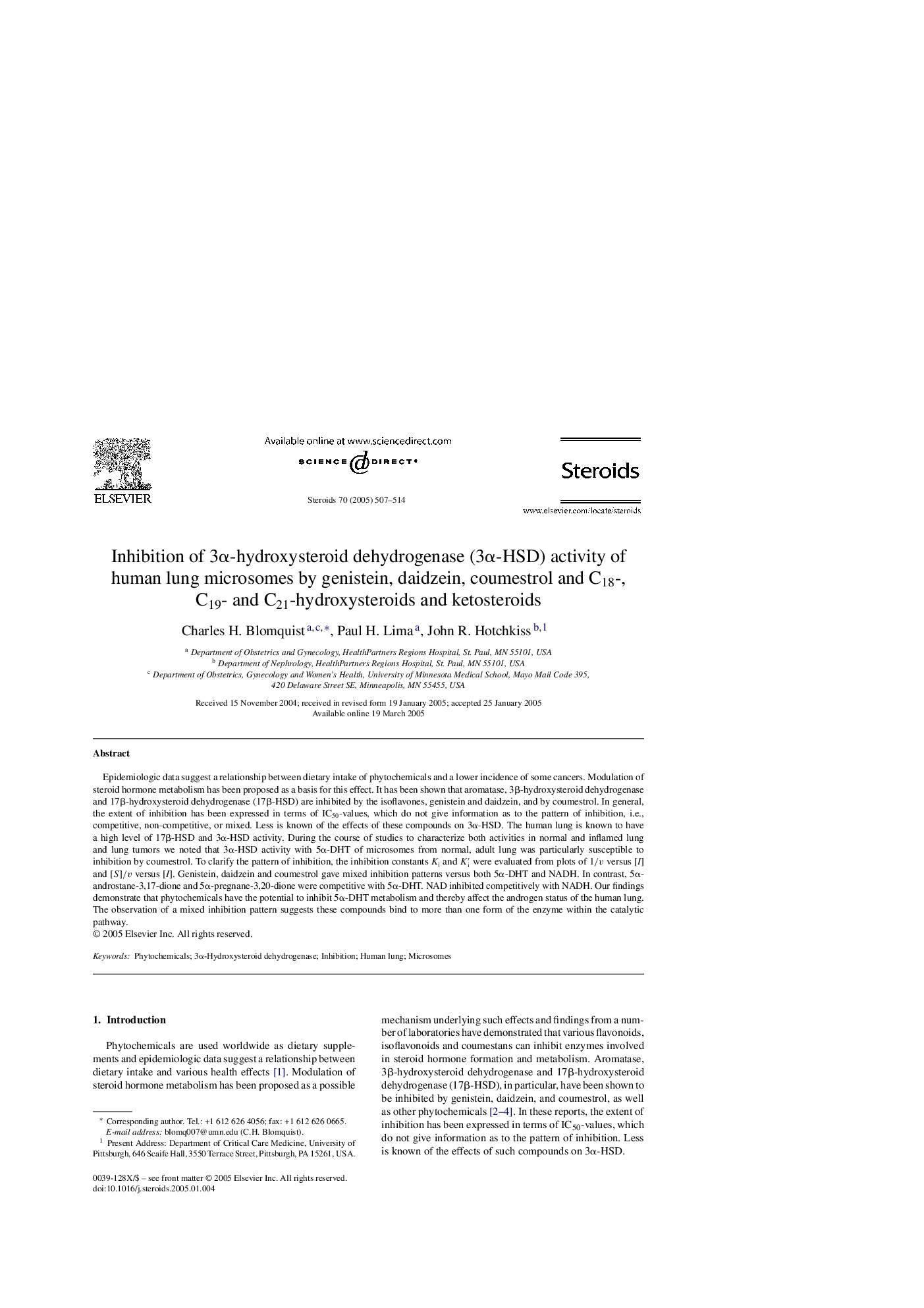| Article ID | Journal | Published Year | Pages | File Type |
|---|---|---|---|---|
| 10848121 | Steroids | 2005 | 8 Pages |
Abstract
Epidemiologic data suggest a relationship between dietary intake of phytochemicals and a lower incidence of some cancers. Modulation of steroid hormone metabolism has been proposed as a basis for this effect. It has been shown that aromatase, 3β-hydroxysteroid dehydrogenase and 17β-hydroxysteroid dehydrogenase (17β-HSD) are inhibited by the isoflavones, genistein and daidzein, and by coumestrol. In general, the extent of inhibition has been expressed in terms of IC50-values, which do not give information as to the pattern of inhibition, i.e., competitive, non-competitive, or mixed. Less is known of the effects of these compounds on 3α-HSD. The human lung is known to have a high level of 17β-HSD and 3α-HSD activity. During the course of studies to characterize both activities in normal and inflamed lung and lung tumors we noted that 3α-HSD activity with 5α-DHT of microsomes from normal, adult lung was particularly susceptible to inhibition by coumestrol. To clarify the pattern of inhibition, the inhibition constants Ki and Kâ²i were evaluated from plots of 1/v versus [I] and [S]/v versus [I]. Genistein, daidzein and coumestrol gave mixed inhibition patterns versus both 5α-DHT and NADH. In contrast, 5α-androstane-3,17-dione and 5α-pregnane-3,20-dione were competitive with 5α-DHT. NAD inhibited competitively with NADH. Our findings demonstrate that phytochemicals have the potential to inhibit 5α-DHT metabolism and thereby affect the androgen status of the human lung. The observation of a mixed inhibition pattern suggests these compounds bind to more than one form of the enzyme within the catalytic pathway.
Related Topics
Life Sciences
Biochemistry, Genetics and Molecular Biology
Biochemistry
Authors
Charles H. Blomquist, Paul H. Lima, John R. Hotchkiss,
